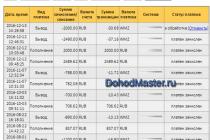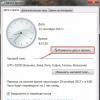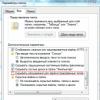When starting a repair or simply hanging a picture, mirror or carpet, if necessary, there is a problem with finding hidden electrical wiring, which can be accidentally hit by hammering a nail or screwing in self-tapping screws. Therefore, it is necessary to have a hidden wiring detector that will help you find all the wires in an apartment or private house, hidden under the plaster. In the absence of it, you can do it yourself.
What are hidden wiring detectors for?
Very often, the owners of apartments or private houses do not have a wiring diagram available, which is necessary when carrying out various repair work. High voltage wires can be accidentally caught while drilling holes or during slitting.
Remember! Regardless of whether you know where the electrical wiring is or not, all work must be carried out only with the power off.
If you yourself have done repairs in the room, and you know where the electrical wires are, then this will greatly simplify the process of work. But the fact is that wiring is often done by craftsmen who, trying to save money, lay wires along the simplest path - from junction boxes not at right angles as expected, but diagonally. And in this case, you cannot do without a special device that allows you to quickly and accurately find hidden wires - hidden wiring detectors.
Such a detector can be purchased at radio stores or markets. They are inexpensive (budget models) and expensive. A cheap device helps to identify live wires and various electrical appliances. More expensive devices are multifunctional and therefore can detect dead wires.
For home use, you can buy the simplest detector or assemble it yourself according to the scheme. Every person who understands electrical circuits can independently make an inexpensive budget device.
Types of modern search devices and their characteristics
Today there are a large number of different types of detectors. Some devices help to find not only wires in the wall, but also an accidental break.
According to the principle of their action, the following types of seekers are distinguished:
- Electrostatic.
- Electromagnetic.
- Metal detectors.
- Combined.
Electrostatic testers
Electrostatic detectors help detect electromagnetic fields that come from live wires. These are simple searchers that you can make yourself according to a certain scheme.
Features and characteristics of detectors:
- Since the searcher reacts to certain electromagnetic fields, the wires in the wall must be energized to be detectable.
- When working with the device, it is necessary to select a certain level of sensitivity, since if it is too low, then problems may arise with the detection of wires that are too deep in the wall under the plaster. If the level is too high, then the device may erroneously work.
- If the walls in the room are damp or there are many different metal structures in them, then the search for wiring will be almost impossible.
But given the low cost, ease of use and efficiency, such devices are used even by specialist electricians.
Electromagnetic devices
Such devices help to find electromagnetic excitation, which comes from the wiring connected to a certain load. The quality of work and accuracy of such seekers is much higher than the previous ones.
Also, these devices have one feature of work. In order to determine where a certain wiring is laid in the wall and how deep, it must have a load of at least 1 kW. For example, you can simply connect an electric kettle or an iron to the mains.
Metal detectors (finders)
There are situations when it is impossible to connect the voltage to the wires or the load, then in this case detectors or metal detectors are used. The devices work in this way: various metal elements enter the electromagnetic field of the seeker, which cause certain vibrations that are captured by the detector.
Such devices clearly respond to any metal objects that are in the walls, therefore, in addition to wires, they will also find them.
Combined devices
Detectors of this type are multifunctional, as they are able to combine several types of devices that find wiring in the walls. Such functions significantly expand the scope of use of detectors, and increase the degree of their effectiveness.
The model TS-75 is in great demand, which contains a metal detector and an electrostatic seeker device.
Homemade detectors can be:
- With sound indication. During the operation of such a device, when it finds hidden wires, a characteristic sound is emitted.
- With sound and light warning system (indication). When the device finds a wiring, it emits not only a sound alert, but also the light starts flashing.
- On a field-effect transistor. This device is easy to make according to a certain scheme. There are several different options for assembling a device with a warning light.
- Search signal without batteries. The device operates from the mains, which also signals detection by a bright light located on the body of the finder.
- Microcontroller based detector. Such a detector works on the responsiveness of the seeker to the electromagnetic field, which is generated by the current flowing through the wires. When assembling, you can use an LED or a sound piezo emitter as a siren.
- Two-piece device. The detector has an LED lamp as an indicator, which turns on when a wiring is detected.
Examples and comparison of popular models
Currently, there are so many different brands and models of devices for finding hidden or broken wiring that it is difficult to consider and describe their characteristics, advantages and disadvantages. Therefore, we will consider only the most popular detectors that are used in household use.
- Electronic tester No. 48M is a multifunctional device for home use, which is used to check the integrity of wires, as well as to find the wiring hidden in the wall by contact and contactless methods. It has LED indication and can detect wires that are located at a depth of 2 cm in the wall.
- The device for searching wiring and metal elements "Sparta" has a sound and light annunciator. Allows you to detect not only wires, but also various metal elements. Finds open points in the chain.
- "Search" is used not only for accurate detection of wiring in the wall and ceilings, but also allows you to check the correct phasing of electrical meters, identify equipment with a break in grounding or grounding, check the serviceability of fuses, and detect breaks in the wiring. Equipped with four sensitivity ranges.
- Finder "DYATEL M" E121.3 helps to find hidden wiring, check the correct phasing of meters, detect phase wires in different parts of the surface of the room, etc. It has a plastic case with a limiting edge for safety of work and four degrees of sensitivity.
- A small Chinese-made UNI-T UT12A non-contact detector can detect voltages from 90 to 1000 VAC. It has a light and sound indicator, as well as an automatic shutdown system when idle for 30 minutes. Outwardly it looks like a regular marker. Very handy for home use.
- The TS-75 wiring finder in a convenient metal housing allows you to accurately determine the location of wiring in the wall while energized. Has light and sound indication.
- The inexpensive American-made S100 STANLEY STHTO-77403 detector is perfect for home and even professional use. Allows you to find not only hidden wiring, but also open circuits. It has small dimensions and a convenient durable plastic case.
If we talk about detectors of domestic production, then they are perfect for domestic use. They have reasonable prices and can offer good quality. Chinese models are more compact and convenient to use. They also have a low cost, but, as we know, this manufacturer cannot boast of a long service life of its products. Choosing brands of well-known European or American manufacturers, you can be sure that the detector will last a long time and will have the required amount of functionality both for home use and for professional work at an affordable price.
Today the choice of factory detectors is quite extensive, but some people often "get lost" in such a variety of devices. Therefore, before buying such a device, experts recommend that you clearly define what it is needed for - for single use or for permanent work with hidden electrical wiring. Experienced craftsmen usually choose multifunctional devices that can recognize hidden metal parts of various characteristics.
When choosing a detector, you need to pay attention to the degree of its scanning depth. If the device is designed for a shallower depth, then during operation it is possible to pass a wire located at a much greater distance from the scanned wall surface.
Professional detectors can work over a long distance. Usually, household devices are purchased for home use, which are quite suitable for the walls of apartments, private houses and thin partitions.
Budget options, which allow you to find only live wiring, are much inferior in their effectiveness to expensive models, but they will help save a person from burns while working.
Diy assembly diagrams for various types of finders
Consider the simplest circuits that you can assemble yourself, having all the necessary devices.
Circuit with sound diode indication
You can make such a device yourself on the basis of the resistor R1, which protects the circuit from direct induced voltage.
A small copper wire of 5-15 cm is used here as a small antenna. When the device finds wires in the walls or ceiling, a characteristic crackling sound is emitted. The sound piezoelectric element is connected to the detector using a bridge circuit that controls the volume level.
Diagram of a device with a light and sound annunciator (indication)
This simple circuit only requires one chip.
The resistor rating of R1 must be equal to or greater than 50 megohms. The LED lamp for indication is used without any restrictions on the degree of resistance, since this microcircuit can perform the task assigned to it without "outside help".
Field effect transistor device diagram
Devices of this type are quite responsive to a steady electric field. This characteristic of the device is applied in the diagram below.
Such a detector can be made independently without the use of special devices. The voltage indicator should be from 3 to 5 V. For the operation of this device, so little electric current is needed that it can function for about six hours without shutting down. The antenna coil is fixed with a wire 0.3–0.5 mm on a special core Ø 3 mm. The number of turns will depend on the thickness of the wire. If its diameter is Ø 0.3 mm, 20 turns are required, and if Ø 0.5 mm - 50 turns. The antenna works well with or without a frame.
Metal detector
The metal detector circuit looks like this:
- VT1 frequency generator (100 kilohertz).
- Detector - VT2.
- Indication - VT3, VT4.
The generator coils are wound on a special ferrite core. Rod - Ø 8 mm. The number of turns on 1 coil is 120 turns, on 2 - 45 turns. Recommended wire PEVTL 0.35.
The adjustment of the metal finder is carried out away from all steel objects. The adjustment is carried out with special resistors R3 and R5 so that the generation process is significantly reduced (flashing diode light and low brightness). Then R3 is tuned so that the emitter is extinguished.
The second step is to adjust the degree of sensitivity. This process is carried out using a small metal object and several resistors. Experts recommend adjusting the sensitivity with some regularity. For process optimization and convenience, the regulators are built into the detector housing.
A tuned metal detector starts to work when the antenna is near metal elements - the light comes on or blinks.
Battery-free wiring detector
Such a device is powered by an electrical network. This circuit works by using a high-capacity capacitor (C1 is indicated on the diagram). The capacitor is charged from the mains and in this state it can transmit voltage from 6 to 10 V. Here, the brightness of the LED light will depend on the degree of voltage, and this indicator does not affect the operation of the device.
Searchers on a microcontroller
In the diagram, we can see the detector, which is assembled on a PIC12F629 microcontroller. This device operates on responsiveness to the presence of a magnetic field generated by the current that flows through the wires.
When assembling, you can use an LED or piezo emitter. When a magnetic field is detected, the indicator starts to work (the light comes on or the emitter starts to crack).
Such a device can only respond with sounders to a certain frequency of 50 Hz. Therefore, errors during operation are excluded here, since it will not react to other types of frequencies.
Two-piece hidden wiring locator
It uses a microcircuit and a diode lamp. You can take a DD1 type microcircuit and an HL1 bulb. It is necessary to connect the leads so that there are 3 inverters in the circuit. Due to this, the device will amplify the currents flowing to the finder from the magnetic field of the wires. When they are near, the light starts to flash. At a distant distance, it goes out.
There are two schematic options:
- Connection: 3 s 8, 2 s 10, 4 s 7 and 9, 1 s 5, 11 s 14.
- Connection: 3 at 8, 10 at 13, 1 at 5 and 12, 2 at 11 and 14, 4 at 7 and 9.
Break finder circuit
This assembly option uses the KP103 microcircuit. This transistor has a high degree of sensitivity. In the event that its gate is very close to the wiring, the resistance decreases and other transistors open, and the LED light starts blinking.
Attention! The KP103 transistor can be used of any type, as well as the AL307 light bulb. And the whole point is that biopolar field workers with such a degree of conductivity have low power, and the transmission coefficient is large. Therefore, instead of the KT203 device, it is necessary to use the KT361.
The device has a small size, so it can be assembled even in an empty case from a regular stationery marker. A thin antenna is pulled through a small hole in the felt-tip pen. Its length can vary from 5 to 10 cm. But if the wires are not too deep in the wall (no more than 10 cm), then you can simply use the leg of the selected transistor. It will be easier and more convenient.
The transistor itself is mounted horizontally, and the gate must be bent so that it is directly above its body.
Video: how to assemble a hidden wiring detector according to the scheme
As many years of experience and practice show, it is not necessary to buy a detector for finding hidden wiring and breaks in a specialized store, since if necessary it can be easily made with your own hands, having at least a little experience with electrical appliances. These home devices also do their job well and find hidden wires.
When renovating an apartment, you often need to know the places where the hidden electrical wiring is carried out. This is necessary for several reasons.
Firstly, during repairs, it is usually necessary to drill holes for fixing various equipment in the walls. In this case, getting into the wiring of a drill of a drill can, at best, lead to damage to the electrical network, and in the worst case, injure a person.
Secondly, when replacing old hidden wiring, you also need to know where it is laid.
Unfortunately, the renovation is not always available in a private house. And although, in accordance with the rules for the installation of networks (PUE), cables must be placed strictly horizontally or vertically, often these requirements are not met, and the home power supply circuit is mounted along the shortest paths.
When repairing a failed hidden wiring, it is also advisable to accurately determine the places of breaks without destroying the wall.
There are two main approaches to detecting a covered wire:
- An alternating electric current usually flows through a working network. In accordance with the laws of physics, an electromagnetic field arises around wires with flowing electricity. Most devices for detecting hidden wiring use this property of electric current.
- Another principle is to operate with an inductor. If wires or fittings enter its electromagnetic field, it will be distorted, which will be reflected by the indicator of the device.
Features of using devices for detecting hidden electrical wiring
 A large number of different devices are available for detecting hidden wiring. They have different complexity, capabilities and, of course, different prices. The cost of such devices can vary widely.
A large number of different devices are available for detecting hidden wiring. They have different complexity, capabilities and, of course, different prices. The cost of such devices can vary widely.
The E121 hidden wiring indicator is very popular among professional electricians. With this device it is possible to find the internal electrical network in the plaster at a depth of 7 cm. The device is easy to use and relatively inexpensive. The price is about 1350 rubles.
MS series devices from China are widely used at home. The advantage of these devices is their low price. The disadvantage is that they react not only to wires, but also to other metals.
Therefore, to work effectively with MS instruments, it is necessary to have some experience in order to distinguish signals from copper wires and from other metal objects.
The price of the MS 158 detector is 350-900 rubles.
Instead of an amplifier, a multivibrator and an LED can be added to the circuit. When hidden wiring is detected, the first light source starts up and blinks.
How to find a break in a hidden wiring?
 A possible culprit for the loss of light in the house can be hidden wiring. A break in the cables can occur, for example, due to the destruction of an old electrical network or damage to it when drilling a wall.
A possible culprit for the loss of light in the house can be hidden wiring. A break in the cables can occur, for example, due to the destruction of an old electrical network or damage to it when drilling a wall.
It is possible to detect an open circuit in the hidden wiring using the above industrial devices. As a rule, the device gives a corresponding sign at the place of the gap. For example, the beep stops emitting.
If a receiver is used as an indicator, then the sound it makes at the break point will differ from its usual noise.
In the absence of any devices available, you can try to find a break using such a conventional tool, almost everyone knows). This method only works if there is a phase loss. This article.
To detect a problem spot, the indicator screwdriver should be slowly led along the hidden wiring when the network is on, and the behavior of the burning light bulb should be monitored.
Any deviations from the normal glow may indicate the location of the cliff.
For the case when there was a break in the neutral wire, this method does not work. To check "zero", it is necessary to change the phasing of the wires.
conclusions:
- When repairing and replacing network wires, it is often necessary to find hidden wiring.
- To find such a power grid, there is a large number of industrial devices, both domestic and foreign.
- To detect a break, you can use both special industrial devices and simple methods, including using an indicator screwdriver.
Demonstration of the device for detecting internal wiring on video
Unfortunately, the light in the apartment sometimes goes out when you don't expect it most. But you can try to independently determine the place where the hidden wiring was broken. By the way, just such a troubleshooting will often be faster than waiting for the arrival of the appropriate specialist for repair. Moreover, as a rule, all family members need light right now.

So, you need the following tools:
- tester;
- indicator screwdriver;
- ordinary screwdriver with different attachments;
- pliers;
- a knife that has handle insulation;
- insulating tape.
In addition, to find a break, you can use a non-contact indicator that determines the location of the hidden wiring. And it does not have to be a separate device, sometimes the simplest of them are built right into the indicator screwdrivers. But remember that when searching, the proximity indicator may not work correctly if, in addition to the wiring, there are other metal objects in the wall, etc.
How to determine the place where the wiring broke
If you want to do all the actions with your own hands and without any factory instruments, then you will have to do something like a portable tester. Find a broken wire with it, you can quickly and easily.
To do this, you will need the following materials:
- working cartridge;
- any light bulb: from 40 to 100 W;
- two insulated wires with one core;
- knife, electrical tape, pliers.
Start by connecting the two solid wires to the socket and then screw the light bulb into it. Strip 2-3mm from the edge of each wire so that the contact goes well.
You can check a self-made tester if you apply electricity to the device. Any socket will work for this: just plug both ends of the wires in there. If the light bulb screwed into the socket starts to glow, you did everything right. And remember that when searching for a break with the tester, you must not touch bare, live wires.
Now it's time to test how quickly your tester will find an open in the hidden wiring. The first thing to do: turn off the power supply to the part of the cable that you will check with the device. Get to the metal strands of the wire in the middle, using a knife to cut off a small part of the insulation layer.
Then you need to apply voltage to the cable under test and use a tester to see if electricity passes through here. If the light starts to glow, then insulate the cut of the insulation and continue looking for a break - it is further away. If the signal from your device does not come (the lamp does not light up), you need to move in the direction where the current comes from.
After the check, it will become clear in which part of the cable there was a break. Further actions are exactly the same as before: find the middle and carry out all the manipulations in the same order. Be prepared that you may need more than one such movement along the wiring, especially when the cable length is long.
Please note that if there are electrical break points on your way (switches, junction boxes, etc.), you will also have to check them with a tester. The device will immediately show the presence or absence of voltage in the network, which will bring you one step closer to troubleshooting and turning on the light.
Well, when, thanks to a search with a tester, you find a breakage point, just replace the wiring there. That's all the repair, which is not so difficult to carry out with your own hands.
How to check switches and sockets
To identify and eliminate the malfunction in this case, you will need an indicator screwdriver. With its help, it is easy to understand which wire is broken: "phase" or "zero".

When inspecting the contacts in this way and the electricity supply is on, there is only one cable under voltage in the outlets - in the off position. In switches it will be one (in the "off" position) or three wires - when it is on.
In any case, if the phase is present, it means that the zero is cut off. Then proceed to inspect the wiring and search for the breakage point using a special device - a tester.

First, the electricity is turned off, and then notches are made on the cables at a certain interval - about a meter. By measuring the resistance between these points, you will see that the values will be approximately the same. Revealing a big difference or almost complete absence of resistance will mean that you have found a break in the electrical wiring in a certain area.
Now you have to split the cable into two more smaller pieces and check them with the device. And so on until you establish the place of the cliff with high accuracy. Although it often happens that at a certain moment it can be seen even with the naked eye.
When the search is over and the problem is corrected, carefully insulate the bare wires. That's it, the work was completed in a short time - which is what you wanted.
Use of special devices
As much as we would not like to do everything with our own hands, using the tools and materials at hand, but sometimes this is simply impossible. Unfortunately, it often happens that it is quite difficult to do without the use of special devices. For example, when a wire break occurs in a thick brick or concrete wall.
In such cases, you will have to use the proximity indicators of hidden wiring for the search. They do not damage the integrity of the cables, but only show the network data at a specific location. Having received them, you can accurately determine the location of the hidden wiring break and quickly carry out repair work.

What to look for when buying
In electrical stores, you will find a lot of different models of detectors, differing in both functionality and price. The simplest of them give an idea of the place of the breakage not as accurately as more expensive devices, but this is also enough for successful troubleshooting with your own hands.
Well, the best and most advanced models of detectors can easily distinguish live from de-energized wiring, and will also be able to indicate the presence of certain materials in the wall. It all depends on the technologies that are used in a particular device.
Varieties of hidden wiring detectors
They are quite simple in structure, but reliable and widely used. Their disadvantage is that they only work with live wiring. In addition, electrostatic detectors can give incorrect readings if the wall is metal or there is high humidity in the room. For example, in a bathhouse or a metal garage, they are practically useless.
Electromagnetic detectors
Their main advantage is the quality and convenience when searching for a break in the wiring hidden in the wall. In addition, they are very reliable and durable. But the weak side of such electromagnetic devices is poor performance with a network load of less than 1 kW or in a complete absence of voltage.

Metal detectors can be used to search for a break in the wiring hidden in the wall, but only if other metal objects (a nail, screw, etc.) do not meet on the way.
Combined detectors
This group of devices for finding a break in the wiring hidden in the wall requires special attention. First of all, because they are quite expensive due to their extended functionality. Combination detectors can use several different methods of detecting network problems at once.

This makes it possible not only to determine the breakage point with high accuracy, but even to find out the depth of the cable laying in the wall or the value of the mains voltage. Some multi-detectors can easily detect non-ferrous metal, plastic or wood that cannot be seen with the naked eye.
How to choose the right hidden wiring detector
It all depends on two factors: the availability of the functions you need and the price of the device. But be careful: there are many types of detectors in the store, which have a minimum of differences. It will not be superfluous to first find out which models are in the greatest demand. Surely there will be less hassle with famous brands than with obscure products made in China.
Yes, it happens that Chinese devices work for many years, and branded ones quickly fail - there is nothing you can do about it. Unless you thoroughly test the detector right in the store, giving them the same tasks for which you buy it.
For example, start by locating a visible wire, and then complicate the search by covering it with wood, foam, etc. Or simply move away from the cable, have the seller disconnect it from the power, and now try to find a break - from different distances. If the detector behaves predictably, as the manufacturer guarantees, then this model is right for you.
When searching for a break in the wiring hidden in the wall, remember that cables are most often laid strictly vertically or horizontally, and the turns are usually about 90 degrees. Knowing this, it will be quite easy to trace the path from the junction box to the outlet or switch.
And do not forget about the main thing when working with electrical appliances - there is always a risk of electric shock. So be sure to de-energize the network before starting work, and you will succeed.
In the process of repair work, it is often necessary to determine the route of hidden wiring. The absence of its scheme complicates this task somewhat. As practice shows, in 90% of cases, the owners of a private house or apartment did not have such a scheme initially, or it was lost. The wiring finder will help to solve the problem.
So looking for hidden wiringTypes of devices and their principle of operation
Wiring finders are usually divided according to the principle of operation, there are four of them:
- electrostatic;
- electromagnetic;
- metal detector;
- combined.
Each of them has its own characteristics that determine the scope of use.
Electrostatic devices
Searchers of this type register the presence of an electromagnetic field emanating from the wires to which the voltage is connected. This is a fairly simple device that is easy to assemble with your own hands (a diagram of the device will be given in the final section). Note that almost all inexpensive detectors work according to this principle.

Features of electrostatic detectors:
- given that the device reacts to electromagnetic radiation, to detect the wiring, it is required that it is not de-energized;
- when working with a detector, it is necessary to select the optimal level of sensitivity. If it is low, it may be difficult to detect deeply located wiring; at the maximum level, there is a high probability of a false alarm;
- damp walls or the presence of metal structures in them make it almost impossible to find wiring.
Given their low price, simplicity and efficiency (with the exception of small restrictions), devices with an electrostatic principle of operation are popular even with professional electricians.
Electromagnetic finders
This type of signaling devices allows detecting electromagnetic excitation emanating from the wires, if a load is connected to them. The accuracy and efficiency of electromagnetic wire finders is significantly higher than that of electrostatic ones.

These devices have a characteristic feature that in order to guarantee the determination of the wiring route, it is necessary to connect a load to it, the power of which is at least one kilowatt, which in most cases does not cause difficulty. For example, this can be done by connecting an electric kettle to the corresponding power line (remembering to fill it with water).
Metal detectors
In cases where it is not possible to connect voltage to the wiring or the load to it, metal detectors are used. The principle of operation of these devices is based on the fact that a metal, falling into an electromagnetic field, causes disturbances in it, which are recorded by the device.

The peculiarities of this class of devices include the fact that they react to any metal in the walls. That is, in addition to wiring, detectors will be triggered when they detect fittings, screws, nails, etc.
Combined Finders
Devices of this type are multifunctional devices - multidetectors. They can combine several principles for finding wiring buried in the wall, which significantly expands the scope and increases efficiency.
An example is the TS-75 shown in the photo below. This device combines the functions of a metal detector and an electrostatic finder.
 Photo: TS-75 - reliable and inexpensive multi-wire detector
Photo: TS-75 - reliable and inexpensive multi-wire detector Appliance cost
The price of devices directly depends on the following factors:
- type of device;
- functionality;
- purpose (for household or professional use).
It should also be borne in mind that "non-name" devices made in China will cost less than reliable devices of well-known brands. For example, the entry-level PMD-7 metal detector manufactured by Bosch costs about $ 60, while the Chinese MS8902B with similar functions costs $ 16. This price range is due to the difference in reliability and sensitivity.
Note that homemade hidden wiring finders are often superior in performance to inexpensive Chinese devices.
DIY hidden wiring finder
In this section, we will give as an example several wiring finder circuits, which even novice radio amateurs can assemble. Let's start with the most basic device.
 Schematic: Simple Field Effect Transistor Wiring Detector
Schematic: Simple Field Effect Transistor Wiring Detector From the details we need: a field-effect transistor, KP303 or KP103 will do (the letter index does not matter), a telephone speaker with a resistance of 1600 to 2200 Ohm and an ohmmeter (used as an indicator).
The body of the transistor plays the role of an antenna; it is guided along the wall. When the wiring is detected (it must be energized), the speaker will display a characteristic sound at a frequency of 50 Hz, and the indicator arrow will deviate.
Unfortunately, the sensitivity of such an indicator leaves much to be desired, so we will consider a more complex scheme.
 Circuit: seeker on three transistors
Circuit: seeker on three transistors List of required radioelements:
- transistors (any index is suitable): T1-KT315, T2-KP103, T3-KT361;
- LED HL-AL307B or any analogue;
- resistance parameters: R1 - 2.2 kOhm, R2 - 10.0 kOhm, R3 - 470 Ohm, R4 - 1.0 MOhm;
- capacitance C -10.0 μF 10 V.
As an antenna, you can use a copper wire with a length of 80 to 100 mm of appropriate thickness (the longer the length, the higher the sensitivity)
The two devices above do not provide the ability to adjust the sensitivity, which will somewhat complicate the search for wiring. Below is a diagram where this function is implemented.
 Circuit: seeker with adjustable sensitivity
Circuit: seeker with adjustable sensitivity Designation of parts in the diagram:
- T - KP103;
- HL - AL107BL (can be replaced with an analogue);
- R1 - 2.0 kΩ;
- R2 -2.0 kOhm (you may need to pick it up to achieve maximum volume);
- R3 - 1.0 MΩ;
- C1 -5.0 μF;
- C2 - 20.0 μF
- SP - speaker with impedance from 30 to 60 Ohm;
- L - contains from 20 to 50 turns of wire with a diameter of 0.3-0.5 mm per frame 3 mm, frameless design is allowed.
Finally, we present a diagram of a combined device that combines the functions of a metal detector and an electrostatic finder.

List of radio components:
- coils for antenna A1: L1 - 60 turns, L2 - 5 turns, wire diameter from 0.12 to 0.16 mm, a ferrite rod (600HN) Ø10mm is used as a frame, its length should be within 50-60 mm;
- T1 - KT315 (the letter index does not matter);
- D1, D2 - KR140UD1208;
- D3 –K561LE5;
- HL1, HL2 - KIPMOB1B-1K;
- VD1 - KD522;
- capacities: C1 and C4 - 0.1 μF, C2 - 1.0 μF, C3 - 0.022 μF, C5 - 0.033 μF, C6 - 1.5 μF;
- resistances: R1 and R19 - 1.0 kΩ, R2 - 4.7 kΩ, R3 - 15.0 kΩ, R4 and R18 - 100.0 kΩ, R5 - 47.0 kΩ, R6 - 1.0 MΩ, R7 - 130.0 kOhm, R8 and R12 - 200.0 kOhm, R9 - 36 kOhm, R10 and R17 - 510 Ohm, R11 - 2.0 kOhm, R13 - 910.0 kOhm, R14 - 160.0 kOhm, R15 - 680 , 0 kΩ.
Switch SW1 is used to switch the operation modes of the multi-detector between the metal detector and the electrostatic wiring indicator. If the latter is turned on, then when the A2 antenna approaches the place where the live wire is laid, the LED turns on (it starts blinking at a frequency of 50 Hz).
In the metal detector operating mode, when a metal object comes under the influence of the inductance field of the antenna A1, HL1 starts to burn, and a sound signal repeating with a period of 2 seconds with a frequency of 1 kHz is heard in the SP piezoelectric emitter.
Of course, the schemes presented above are far from perfect, but their sensitivity is quite enough for domestic use.
Modern technology designed to work with electricity is considered an excellent helper for domestic and industrial conditions. In our article we will talk about a device called a hidden wiring detector.
We offer you detailed instructions for choosing a hidden wiring indicator, and also consider common types of electronic devices.
Today, there are simple devices on the market and more advanced ones. In this section, we will consider how experts who are well versed in such a technique are advised to make a choice of devices:
Important! Do not neglect the "good provenance", most likely, it is manufactured to high requirements and standards.
Types of signaling devices
Among the offered assortment of devices for finding electrical wiring in the wall, there are a lot of noteworthy options.
Electrostatic signaling devices. The device is reliable and easy to use. Created on the basis of new technology, therefore, it has a wide range of operation. If we talk about the shortcomings, we can highlight the inability of the indicator to detect de-energized electrical wiring.
Electromagnetic detectors. They have a very high accuracy of scanning space, practically no errors are observed in calculations. The tool is quite reliable and can last longer than the allotted service life. To get an accurate determination of the location of electricity in the walls, a voltage of 1 kW or more is required.
Important! Electromagnetic detectors are not able to detect lightly loaded and unloaded electrical networks.
Metal detecting devices. Such a device is capable of detecting any metal element embedded in a wall. This feature is both an advantage and a disadvantage of the device. With such a device, you can find every nail or old non-working electrician.

Combined fixtures. These devices are considered to be as accurate and expensive as possible. The functions of the device include the simultaneous inclusion of several options for the search for electricity. These mechanisms include means that can find the location of non-ferrous metal pipes. In addition, there is the possibility of detecting cables at great depths.
Attention! Do not fall for the gimmicks of cheap prices, perhaps a device with such a cost will not perform important functions for you.
How to check the purchased signaling device of hidden wiring
If the purchased device has a decent and proven quality, you will not be forbidden to check it right at the outlet. You are required to:
- turn on the device you purchased and try to find any visible electrical or lighting wiring. Spotlights and wiring from an air conditioner will do;
- do the same process, but moving slightly away from the tested wiring;
- try to find a wire with no voltage from different distances;
- try to cover the appliances with some kind of insulating material (foam, rubber mat or board), of course, if the seller allows you to do this.
We draw your attention to the fact that the check carried out must match the description in the instructions, if so, this indicates the observance of quality during the invention of the device.

Hidden wiring detectors rating
Attention! Each of the multi-detectors can contain useful add-ons such as a digital tape measure and a laser level.
The Bosch GMS 120 Prof device is literally recognized as a quality benchmark based on the research results. The metal detection spectrum among all existing indicators is the highest. This metal and hidden wiring detector is capable of finding steel, copper, aluminum and other elements in walls.
A successful search result is accompanied by light and sound alerts.
Black and Decker BDS200 - This device has an average performance and belongs to the average classification in terms of its own functionality. A device like this focuses solely on finding metal parts. Has a low detection rate. A detector with an impact-resistant coating and a sensitivity regulator has been manufactured.

The result is transmitted by light and sound signals, and is also duplicated on the LCD monitor. Estimated cost 1300 rubles.
DSL8220S - the device is produced in China and the Russian Federation. The search depth for metallic material is about 20 cm. It has the ability to find a phase conductor, but cannot find wood and plastic. The device is protected from moisture, gives sound and light signals when a metal element is detected in the wall. Its average price ranges from 600 to 900 rubles.
Procedure for finding hidden wiring
The device for searching for hidden wiring has its own peculiarities of work. Some of the options are capable of locating wood beams and floors. Consider the order of actions with which we can use the indicator in the wall.
- We connect the device to the wire. If your cable has an end connector, then the red clip clings to the wire, and the black clip is attached to the ground of the device. When there is no connector, connect the red terminal to one wire and the black terminal to the other.
- We turn on the indicator lever, thus we bring it into working condition.
- We turn on the button of the inductive probe.
- Now we bring the isolated probe to the electrical cable in order to detect the outgoing signal of the detector.
- We start rotating the regulator, thanks to which we adjust the level of the device and find the cable, evaluate its performance.
Important! To avoid too loud a signal, you must use headphones, the output for them is located at the bottom of the device.
How the wiring search indicator works: device diagram
For clarity, consider two simple indicators with a diagram of its mechanism.

The second option is more advanced, but does not have any difficulties in work. In this device, there is not only a sound signal, but there are also light pulses.

What is a hidden wiring proximity indicator?
Non-contact wiring detectors are intended solely for finding faults in the electrical circuit and finding an open circuit. This device is called special, because sometimes it is impossible to do without it, and leaving the wiring with a missing contact is very dangerous for property and for human life in general.
The peculiarities of the operation of such devices is considered their ability not to damage the broken conductor and to establish the exact place of the problem in the wall. By working with the proximity indicator, you will receive accurate information about the location of the malfunction, therefore, you can easily fix it.
Can I make an indicator with my own hands? Manufacturing principle
The purchase of a device that detects wiring located in the wall is available to everyone. However, this is not always necessary. In most cases, you just need to find a live cable, which means that the amateur level of the device will also do, which can be easily done on your own.

Important! Having a phone with a charged battery will allow a more accurate pulse and sound signal to be transmitted.
- Let's start connecting the tools. First, we connect the transistor to an ohmmeter. If all fasteners are made correctly, the device will come within the range of electromagnetic waves. This will be noticeable by the deflection of the arrow - if it moves to the maximum, then there is a cable in this zone that you are looking for.
- There is also another connection scheme. The field-effect transistor, telephone and battery are directly connected here. In these cases, the detection signal will be louder.
The manufacture of such a device is suitable only for searching live conductors in the network. Empty, faulty or old wiring cannot be found in the wall. In addition, you will be able to avoid accidental electric shock during installation work.
How to find electrical wiring in an apartment?
To find electrical wiring, it is not necessary to resort to purchasing special devices. For such purposes, there are two search methods: visual, magnetic and radio.
What is visual technique?
A similar search option is to inspect the walls. This requires knowing the possibilities of laying electrical cables. In multi-apartment buildings of panel type, this will not be difficult, since here the wiring to powerful consumers was carried out strictly in an upright position, of course, if such manipulations were carried out professionally.
How does the radio find the wire?
This method can be performed by any, even the simplest radio receiver. All that is required is to turn on the radio and listen to it, moving it along the walls, if there are crackles and noises, then the electrical wiring has been found. It creates audible interference.

In addition, it is easy to detect a wire break or a short circuit with a radio receiver. It can be determined by the change in noise transmitted by the radio device.
Important! The radio operates on the principle of a modern detector used by professionals. The difference between these devices in the use of technology, and the principle of operation of the devices is similar.
How to use the magnetic method?
This technique is available to smartphone owners. You need to install a special program on it, and thanks to the magnetic elements, the software picks up the signal and transmits it to the monitor of the mobile device.

How to replace the transaction tracking indicator?
In order not to waste your own budget, there is always the opportunity to use more alternative methods. For instance,
- indicator screwdriver;
- multimeter;
- tester;
- transistor.
Important! All of these devices must be able to use, as well as understand and decipher the received signals.
If we talk about a professional approach to this work, various sensors are used.

Functional features of signaling devices
Whatever hidden wiring signaling device you buy - they all should equally have the following list of functions:
- the presence of alternating voltage and the ability to switch it in the range from 70 to 600 V;
- identification of magnetic radiation with an indicator of at least 0.5 mW / cm;
- determination of the direction of hidden cables and their search at a depth of at least 55 mm;
- revision of the electrical circuit for integrity and calculation of resistances from 0 to 50 mOhm;
- the presence of supply equipment;
- the optimal temperature range for performance is from -10 to +50.
Important! Before using the detector, it must be checked for operability and calibrated.
Which device is better: imported or domestic?
There are no specific complaints about imported or domestic signaling devices. Therefore, each installer must choose a fixture according to his preferences, in which to add functions, appearance, basic parameters and many other details of interest.
The domestic appliance is by all indications intended for domestic use, which means that all functions regarding electricity will meet the wiring requirements that need to be tracked in the walls.
Foreign instruments are manufactured exclusively according to the standards stipulated in the country where they are produced. There is a possibility that the laying of electrical networks abroad according to the PUE does not coincide with our established rules.
When making such a technique with your own hands, you need to take into account the risk of flaws in the completed device. Sometimes even the correct circuit cannot be an ideal assistant in the production of indicators for electrical wiring. Therefore, it is better to listen to the opinions of specialists, and if you suspect a problem in the electrical circuit, invite them for repair work.














